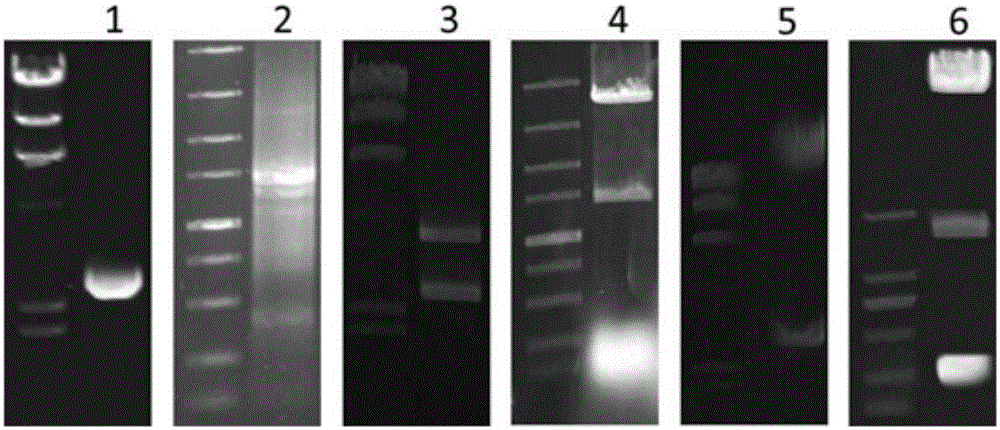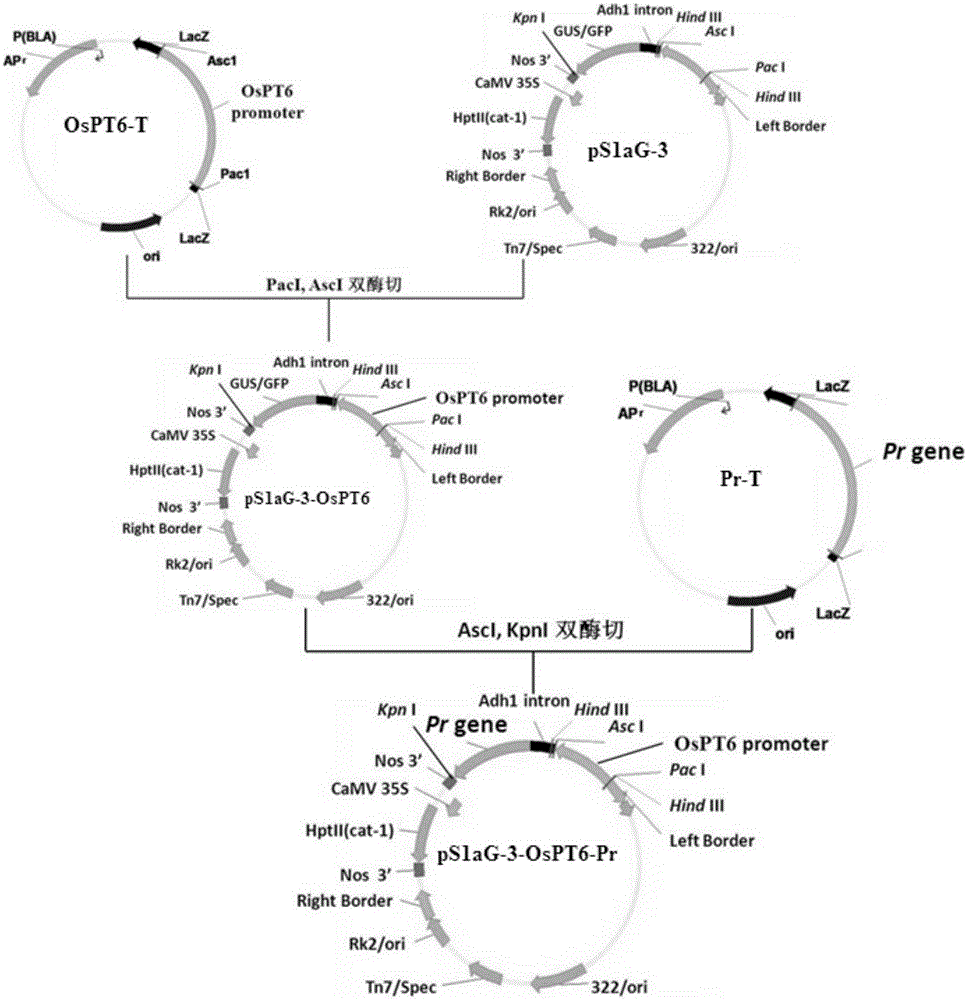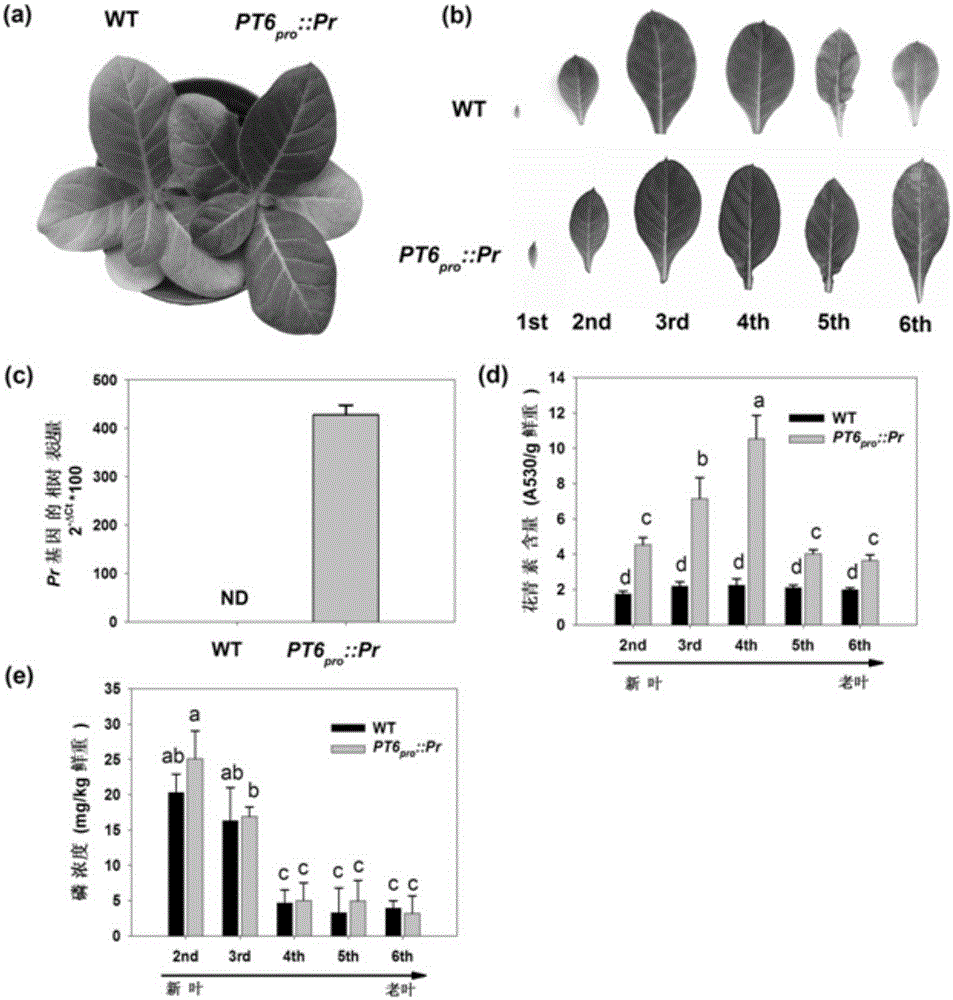A method for rapid diagnosis and visual dynamic monitoring of plant phosphorus nutrition and the application of its recombinant expression vector
A rapid diagnosis and dynamic monitoring technology, applied in the field of genetic engineering, can solve problems such as application research gaps, and achieve the effect of sensitive dynamic monitoring
- Summary
- Abstract
- Description
- Claims
- Application Information
AI Technical Summary
Problems solved by technology
Method used
Image
Examples
Embodiment 1
[0067] Cloning of embodiment 1.OsPT6 promoter and Pr gene:
[0068] 1) Genomic DNA extraction Take rice and cauliflower leaves that grow normally under natural conditions, and quickly put them in liquid nitrogen for cryopreservation. Weigh about 0.1g of the sample, grind it fully with liquid nitrogen and transfer it to a 2ml centrifuge tube, add 500μl of DNA for extraction After buffer, vortex thoroughly to mix. 65°C constant temperature water bath for 15-20min, vortex the sample every 5min. Add 500 μl of chloroform-isoamyl alcohol (ratio 24:1), and mix slowly on a shaker for 10-15 minutes. Centrifuge at 7500rpm for 15min at 4°C. Transfer the supernatant to a new 1.5ml centrifuge tube, extract once with 500μl phenol / chloroform (1:1), and then extract once with an equal volume of chloroform. Carefully transfer the supernatant to a new 1.5ml centrifuge tube, add 1ml of absolute ethanol, turn it upside down several times, and place it at -20°C for 10min. Centrifuge at 7500rpm...
Embodiment 2
[0081] Embodiment 2. Construction of plant expression vector pS1aG-3-OsPT6-Pr:
[0082] 1) Construction of the intermediate vector of OsPT6 promoter and Pr gene. The PCR products of OsPT6 promoter and Pr gene were separated by agarose electrophoresis and recovered by gel cutting. The recovered fragments were respectively connected with pMD19-T vector. The total volume of the enzyme-linked system was 10 μl , containing 5 μl of ligation solution, 1 μl of pMD19-T vector, 3-4 μl of PCR purified product, supplemented with 10 μl of water, and then ligated overnight at 16°C; then transferred to Escherichia coli DH5α competent cells and coated with 100 μg / mL ambenzyl After growing on LB solid medium for 12h-14h, pick positive colonies for DNA sequencing. The bacteria solution with correct sequencing was added to an equal volume of 30% glycerol and stored at -70°C for later use. Recombinant plasmids containing the OsPT6 promoter sequence and the full-length sequence of the Pr gene were...
Embodiment 3
[0098] Example 3. Verification of Phosphorus Deficiency Indicating Effect of Transgenic Tobacco
[0099] 1) Cultivation of wild-type and T1-generation transgenic tobacco Put the wild-type and T1-generation transgenic tobacco seeds into a 1.5ml sterile centrifuge tube, soak in 30% sodium hypochlorite solution for 10 minutes; pour off the sodium hypochlorite solution, and wash with sterile water 4-5 times , soak for 30min for the last time. Carefully transfer the seeds to sterile filter paper to blot dry, carefully place the seeds on sterile 1 / 2 MS solid medium with sterile tweezers, and culture them in a tissue culture room at 28°C for 4-6 weeks.
[0100] 2) Phosphorus deficiency treatment of transgenic tobacco. The wild-type and transgenic tobacco that had grown to two true leaves were aseptically cultured and moved into sterilized sand. The phosphorus nutrient solution was cultivated for 14 days, and the formula and concentration of the nutrient solution were: 2mM KNO 3 , 1...
PUM
 Login to View More
Login to View More Abstract
Description
Claims
Application Information
 Login to View More
Login to View More - R&D
- Intellectual Property
- Life Sciences
- Materials
- Tech Scout
- Unparalleled Data Quality
- Higher Quality Content
- 60% Fewer Hallucinations
Browse by: Latest US Patents, China's latest patents, Technical Efficacy Thesaurus, Application Domain, Technology Topic, Popular Technical Reports.
© 2025 PatSnap. All rights reserved.Legal|Privacy policy|Modern Slavery Act Transparency Statement|Sitemap|About US| Contact US: help@patsnap.com



